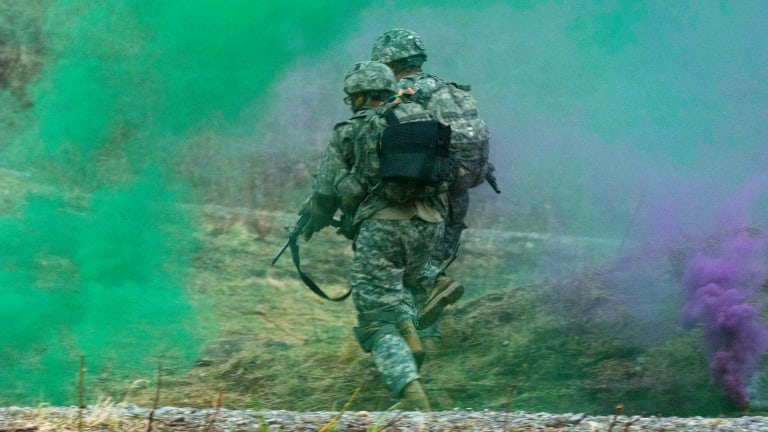KRIS OSBORN
 Newer technologies such as long-range sensors, unmanned systems, precision-guided weapons, multi-domain networking and AI-enabled information processing are leading Army weapons developers, futurists and researchers to explore the large extent to which technological change generates a need to adjust maneuver formations in combat. Extending this further, the advent of paradigm-changing technologies is driving the Army to author new “doctrine” to address anticipated challenges expected to emerge in future war.
Newer technologies such as long-range sensors, unmanned systems, precision-guided weapons, multi-domain networking and AI-enabled information processing are leading Army weapons developers, futurists and researchers to explore the large extent to which technological change generates a need to adjust maneuver formations in combat. Extending this further, the advent of paradigm-changing technologies is driving the Army to author new “doctrine” to address anticipated challenges expected to emerge in future war.For instance, the famous Cold War Era Air-Land Battle doctrine is being replaced by modern concepts of Combined Arms Maneuver driven by the use of drones, manned-unmanned teaming, a dispersed battlefield and unprecedented multi domain connectivity.
“With multi domain operations, new doctrines are being rolled out and we are working on the next concepts. Beyond doctrine, we're finding all new, completely new ways to fight with machine or human machine teams, artificial intelligence, and all the things that go with integrating those great human machine teams on the battlefield,” Lt. Gen. Thomas Todd, Chief Innovation Officer, Army Futures Command, told Warrior in an interview.
Scroll to Continue
Unmanned systems in particular, and the growing extent to which they extend and reshape the battlefield by teaming with manned platforms is a key driver when it comes to ongoing efforts to craft new doctrine and redefine approaches to Combined Arms Maneuver. A battlefield extended by forward operating surveillance and attack drones can achieve Combined Arms-like synergistic effects in new and different respects. Mechanized formations, for instance, will not need to be as linear or condensed but rather enabled by wide area maneuver possibilities and disaggregated, multi-domain formations.
“Human machine teams and how they work together on the battlefield is paramount. That's one of the major things we're experimenting with, whether it be air ground, software, or systems of subsystems. In real time, we are trying to understand exactly how they can be optimized to work best together, because if there's one thing we know, human on human versus… human machine…human machine generally prevails. Same thing with machine or machine, human machine generally prevails over that as well,” Todd.
No comments:
Post a Comment